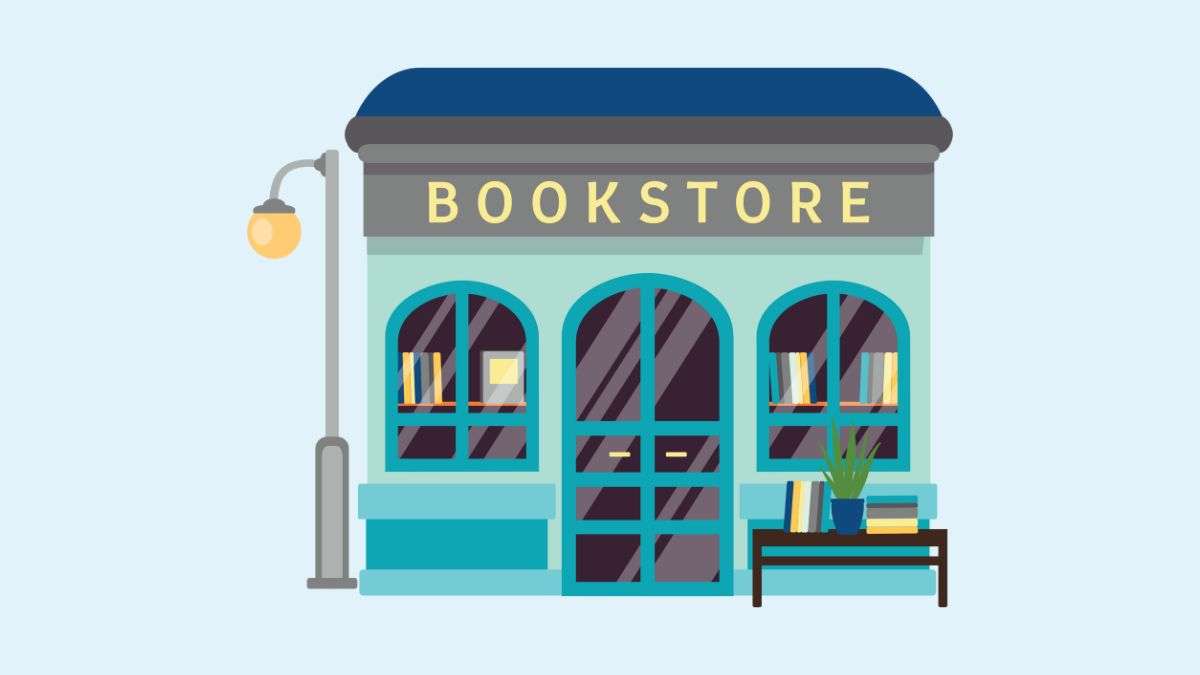Table of Contents
- Introduction
- Understanding Your Audience and Niche
- Setting Up Your Bookstore for Success
- Cultivating a Unique Experience
- Navigating Business Operations
- Conclusion
Introduction
Let’s delve into how to run a successful bookstore. Though undoubtedly rewarding, keeping a bookstore running profitably poses its own set of unique challenges. Competition from e-commerce giants, the rising popularity of ebooks, and the readers’ ever-changing tastes demand that today’s bookstore owners constantly innovate and adapt to stay afloat. The sections ahead equip you to navigate these choppy waters by imparting nuggets of hard-won wisdom on how to:
Getting to intimately know local bookworms’ interests and reading habits provides the foundation for building loyalty and keeping your shelves stocked with titles they can’t resist. You’ll learn research-backed techniques to determine your community’s preferences and pinpoint promising genres or categories to spotlight.
Creating the ambiance of a cozy literary salon right within your bookstore transforms every visit into a sensory delight that keeps customers coming back. From tips on store layout to innovative event ideas, you’ll discover numerous ways to craft that elusive atmosphere of comfort and familiarity book lovers seek.
Imbuing your brand’s identity with your unique personality and perspectives allows you to forge genuine connections with fellow bibliophiles. You’ll grasp how social media engagement, specialty collections that speak to your values, and community partnerships can magnify your bookstore’s distinctive appeal. So, let us begin our journey into the ever-fascinating enterprise of running a successful bookstore. As the pages turn, may you gain the vision and courage to step into the rich story still blank before you. The tale awaits your pen.
Understanding Your Audience and Niche
Identifying the target audience for a bookstore is crucial for understanding their preferences and catering offerings accordingly. Thorough market research of the local community can determine the right niche that aligns with residents’ reading interests. This ensures the inventory and ambiance resonate with customers to foster loyalty.
When starting a bookstore, identify critical demographics like age ranges, education levels, occupations, etc. Conduct surveys to gain insights into reading habits—fiction or non-fiction preferences, favorite genres and authors, and preferred book formats (print, ebook, etc.). Track broader industry trends in book consumption. This data helps create customer profiles to understand expectations regarding inventory, recommendations, and store atmosphere.
The local community significantly impacts the appropriate niche. Analyze area demographics and psychographics by factors like income levels, cultural backgrounds, and lifestyle choices. Drive around neighborhoods to observe community dynamics directly. Talk to residents to determine unmet needs. Fitting the niche means catering to the target audience while filling a gap. For instance, a children’s bookstore near schools or a specialty cookbook shop in a foodie neighborhood.
An aligned collection entices the target demographics to engage more. Stock books that residents are most likely to purchase instead of general bestsellers. Create themed sections matching their reading tastes. Host book clubs and author events featuring relevant genres. Offer personalized picks through newsletters or on-site recommendations. When offerings resonate with the audience, they become repeat, loyal customers. They associate the store with their reading identity, taking ownership as “their bookstore.”
Setting Up Your Bookstore for Success
Selecting the right location is critical when setting up a successful bookstore. Consider areas with heavy foot traffic, such as downtowns or near colleges and transport hubs, to drive customer volume. The space should also be easily accessible for all, including those with disabilities. Analyze area demographics to determine target audience alignment as well. A family-friendly neighborhood may better suit a children’s bookstore, while urban city centers cater more to young professionals.
Designing an Inviting Layout
The bookstore layout directly impacts the browsing experience. Organize sections by genre and subgenres to facilitate discovery. Have cozy seating for reading nooks and a cafe onsite to encourage customers to linger. Ensure ample open spaces for author events and children’s storytime. Consider display tables for curated collections and new releases upfront. Place checkout counters conveniently without disrupting traffic flow. Most importantly, make the space warm, charming, and reflective of the book-loving community.
Curating the Inventory
Carefully curate inventory selection based on target audience interests. Balance catering to known preferences with introducing potential new favorites across formats like fiction, nonfiction, graphic novels, and children’s books. Monitor bestseller lists but also spotlight hidden gems.
Foster local author representation. Maintain a corner for quirky novelty gift items. Consider reserving shelf space to test budding trends, like book club favorites or viral TikTok books. Don’t forget the classics that stand the test of time and appeal to devotees. Occasionally refresh inventory by donating older stock to libraries and shelters.
Cultivating a Unique Experience
Creating a welcoming ambiance is critical for any bookstore looking to stand out. Consider hosting regular author events and signings to drive foot traffic and showcase your inventory. Schedule poetry readings, book clubs, writing workshops, storytimes for kids, and other themed events that align with your niche. Decorate sections of the store according to different genres or seasonal themes. Place comfortable seating throughout the store to encourage customers to linger and explore new books. You want customers to feel at home amidst the shelves of books.
Implementing Personalized Recommendations and Building Customer Loyalty
Get to know your regular customers and what genres or authors they enjoy. Greet them by name and suggest new releases you think they might like based on their previous purchases. Keep a notebook with details about customer preferences to help with recommendations. Offer incentives like frequent buyer punch cards to encourage repeat business. Send promotional emails for upcoming events or new inventory that caters to their interests. Building personal connections makes customers more likely to choose your store over large online retailers.
Using Social Media and Community Engagement
Promote your inventory and events through social media platforms like Facebook and Instagram. Share photos of featured sections or new releases to give followers a window into the store. Post stories showing behind-the-scenes glimpses of shipments arriving or events being set up to foster excitement. Ask followers to tag your store in their posts about their bookstore experiences. Sponsor a community book drive or fundraising initiative to strengthen connections in your neighborhood. The more embedded in the local community your store becomes, the more your unique identity will spread by word-of-mouth.
Navigating Business Operations
Running a successful bookstore requires carefully managing business operations to ensure profitability without compromising the integrity or vision of the store. As the owner, you must make decisions regarding inventory, pricing, promotions, processes, and potential revenue streams that align with your target audience and niche.
Managing Inventory, Pricing, and Promotions
Start by analyzing sales data and customer purchasing patterns to inform buying decisions. Curate a selection catered to your audience while balancing customer demand and trends in the industry. Keep track of popular authors, genres, and upcoming releases to ensure you have a diverse and up-to-date inventory.
On pricing, consider competition, market demand, and profit margins. Find the balance between offering competitive prices and maintaining profitability for your store. Consider offering discounts or promotions on slower-selling titles to encourage sales.
Promotions can be a powerful tool to drive traffic to your store. Consider offering exclusive deals or discounts to loyal customers, hosting seasonal sales or clearance events, and partnering with local businesses or organizations for cross-promotions. Utilize social media and email marketing to spread the word about promotions and drive foot traffic.
Efficient Processes and Revenue Streams
Streamline your bookstore’s processes to maximize efficiency and minimize costs. Implement an organized system for inventory management, ordering, and restocking. Consider utilizing technology and software solutions to automate tasks such as bookkeeping, customer relationship management, and online sales.
In addition to book sales, explore additional revenue streams that align with your bookstore’s mission and values. This could include selling merchandise related to books or literary themes, offering book-related services such as book repairs or custom bookbinding, or hosting paid workshops or classes.
Financial Management and Sustainability
Maintaining financial stability is crucial for the long-term success of your bookstore. Keep track of expenses, revenue, and profit margins regularly to ensure your store is financially sustainable. Consider working with an accountant or financial advisor to help manage finances and make informed decisions.
Seek out opportunities for cost-saving measures, such as negotiating favorable terms with suppliers or considering joint purchasing programs with other independent bookstores in your area. Explore potential grants or funding opportunities that support small businesses in the book industry.

Continuously evaluate and adjust your business strategies based on sales and customer feedback. Stay adaptable and open to new ideas and trends in the industry while staying true to your unique bookstore experience. With careful planning and execution, your independent bookstore can thrive in today’s competitive market.
Conclusion
In crafting the conclusion to our exploration of how to run a successful bookstore, we bring together key elements that characterize a vibrant, flourishing enterprise. At the heart of every recommendation is the recognition that bookstores are not merely retail spaces but cultural havens that nurture and reflect the essence of their communities.
A successful bookstore goes beyond transactions; it weaves itself into the fabric of its neighborhood as a place of discovery, relaxation, and connection. It’s a platform where literature meets life, fostering dialogue, education, and entertainment. Independent bookstores, in particular, can become landmarks by drawing on the uniqueness of their local setting, personal touch in curating a bespoke collection and creating memorable experiences for all who walk through their doors.
Engaging with your audience on a personal level and knowing their interests aids in building a loyal customer base — indispensable for the longevity of any bookstore. Events, clubs, and workshops create a dynamic environment and foster a strong sense of community, enhancing the store’s role as a cultural hub. Leverage social media to extend this community online, where the conversation about books and ideas can continue unabated.
In the operational realm, attention to detail in managing inventory, developing pricing strategies, and creating efficient processes ensure the gears of the business run smoothly. Financial sustainability must be approached rigorously and creatively, embracing traditional revenue methods while being open to novel, supplementary income streams, ensuring the bookstore remains viable.
Ultimately, the measure of a successful bookstore is its ability to persist as a cherished space that captures the imagination and loyalty of the reading public. The bookstore of tomorrow will continue to require innovation, resilience, and a steadfast commitment to the timeless love of books, ensuring that these bastions of thought and discourse remain relevant and thrive in an ever-evolving literary landscape. With passion and a strategic approach, the story of your bookstore can be a tale of triumph and joy shared with every patron who walks in, seeking the magic that only a bookstore can provide.
